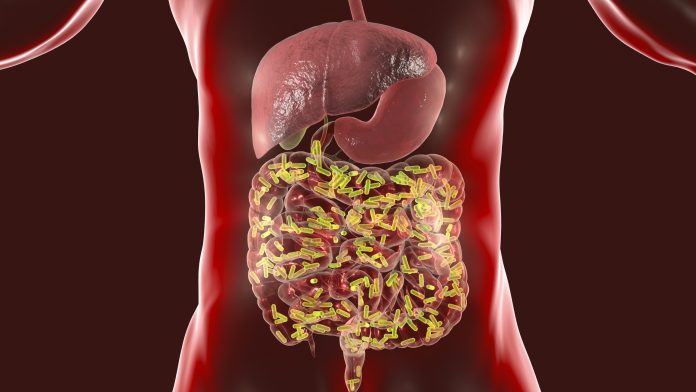
Gut microbes carried by a mother share genetic information with those in her baby’s digestive tract and may affect its development before and after birth, researchers have discovered.
They found that mobile genetic elements from the mother’s bacteria shaped her child’s gut microbiome—the sum total of all microorganisms in the digestive tract.
This occurred through horizontal gene transfer, involving the lateral movement of genetic information between microbes.
Children’s gut metabolomes—consisting of metabolites and their interactions within the body—were less diverse than those of their mothers. Nonetheless, they still showed over 2,500 unique metabolomic features.
Vaginal or Caesarean delivery, breastfeeding, the use and type of infant formula, and prior antibiotics could all significantly influence the child’s microbiomes and metabolomes.
In addition, pregnancy-related changes to the mother’s metabolome and microbes were able to potentially impact on her metabolic health, according to the study published in the journal Cell.
“This is the first study to describe the transfer of mobile genetic elements between maternal and infant microbiomes,” said senior study author Ramnik Xavier, from the Broad Institute of MIT and Harvard.
“Our study also, for the first time, integrated gut microbiome and metabolomic profiles from both mothers and infants and discovered links between gut metabolites, bacteria and breastmilk substrates.
“This investigation represents a unique perspective into the co-development of infant gut microbiomes and metabolomes under the influence of known maternal and dietary factors.”
The team studied fecal and serum samples from 74 babies and 137 mothers, including 70 mother-infant pairs from late pregnancy through the first year of life.
They identified 977 transmitted genes which not only encoded functions relating to mobile genetic elements but also involved carbohydrate use, amino acid metabolism, and iron acquisition and storage.
Many bacterial species involved in gene transmission belonged to the order Bacteroidales. Although these species were rarely transmitted to infants, their relative abundance in maternal samples exerted a significant influence on child’s gut microbial structure.
While the children’s gut metabolomes were less diverse than those of their mothers, they featured hundreds of unique metabolites and microbe-metabolite associations, such as those involving neurotransmitters and immune modulators.
The team also found that microbiome and metabolome shifts during pregnancy could impact maternal metabolic health.
Pregnancy was associated with an increase in steroid compounds, including gonadal hormone derivatives and intermediates of bile acid biosynthesis, several of which were independently linked to impaired glucose tolerance.
The researchers further found that the metabolomes and serum cytokine signatures from babies who received regular, but not extensively hydrolyzed, formula were distinct from those exclusively breastfed.
Infant formula containing intact exogenous proteins was linked to an increase in proinflammatory serum cytokines relative to exclusive breastfeeding, which the researchers say is consistent with data indicating that formula-fed infants have a higher risk of developing autoimmune disease.
“The infant gut harbored thousands of unique metabolites, many of which were likely modified from breastmilk substrates by gut bacteria,” explained co-first author Tommi Vatanen, also from the Broad Institute of MIT and Harvard. “Many of these metabolites likely impact immune system and cognitive development.”
The researchers conclude: “Our investigation represents a unique perspective into the codevelopment of infant gut microbiomes and metabolomes under the influence of known maternal and dietary factors, with potentially profound implications for immune and neurodevelopment.”
They add: “Together, these observations open new prospects for targeted interventions to ensure optimal opportunities for growth and development in infancy.











